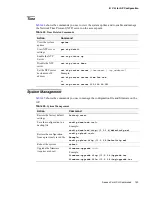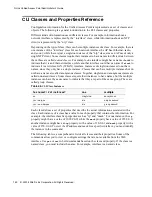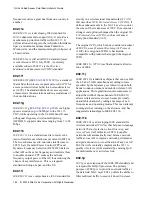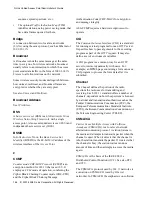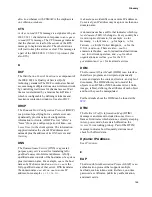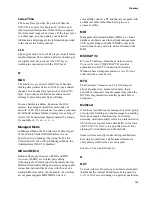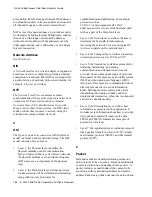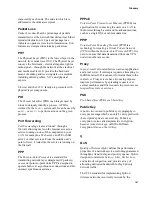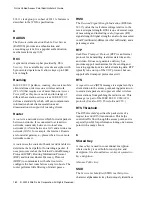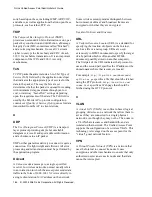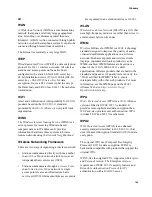
Glossary
163
wireless local area network. It is also referred to as
the Network Name. There are no restrictions on the
characters that may be used in an SSID.
Standalone Mode
In Standalone Mode, the D-Link AP acts as an
individual access point in the network, and you
manage it by using the Administrator Web User
Interface (UI) or the CLI.
Static IP Address
See
IP Address
.
STP
The Spanning Tree Protocol (STP) is an IEEE 802.1
standard protocol (related to network management)
for
MAC
bridges that manages path redundancy and
prevents undesirable loops in the network created by
multiple active paths between client stations. Loops
occur when there are multiple routes between access
points. STP creates a tree that spans all of the
switches in an extended network, forcing redundant
paths into a standby or blocked state. STP allows
only one active path at a time between any two
network devices (this prevents the loops), but
establishes the redundant links as a backup if the
initial link should fail. If STP costs change, or if one
network segment in the STP becomes unreachable,
the spanning tree algorithm reconfigures the
spanning tree topology and reestablishes the link by
activating the standby path. Without STP in place, it
is possible that both connections may be
simultaneously live, which could result in an endless
loop of traffic on the LAN.
Subnet Mask
A Subnet Mask is a number that defines which part of
an IP address is the network address and which part
is a host address on the network. It is shown in
dotted-decimal notation (for example, a 24-bit mask
is shown as
255.0.0.0
) or as a number appended to
the IP address (for example,
10.90.90.91/24
).
The subnet mask allows a router to quickly determine
if an IP address is local or needs to be forwarded by
performing a bitwise AND operation on the mask
and the IP address. For example, if an IP address is
192.168.2.128
and the netmask is
255.255.255.0
,
the resulting Network address is
192.168.2.0
.
The bitwise AND operator compares two bits and
assigns 1 to the result only if both bits are 1.
Supported Rate Set
The supported rate set defines the transmission rates
that are available on this wireless network. A station
may be able to receive data at any of the rates listed
in this set. All stations must be able to receive data at
the rates listed in the
Basic Rate Set
.
SVP
SpectraLink Voice Priority (SVP) is a QoS approach
to Wi-Fi deployments. SVP is an open specification
that is compliant with the IEEE 802.11b standard.
SVP minimizes delay and prioritizes voice packets
over data packets on the Wireless LAN, thus
increasing the probability of better network
performance.
T
TCP
The Transmission Control Protocol (TCP) is built on
top of Internet Protocol (
IP
). It adds reliable
communication (guarantees delivery of data), flow-
control, multiplexing (more than one simultaneous
connection), and connection-oriented transmission
(requires the receiver of a packet to acknowledge
receipt to the sender). It also guarantees that packets
will be delivered in the same order in which they
were sent.
TCP/IP
The Internet and most local area networks are
defined by a group of protocols. The most important
of these is the Transmission Control Protocol over
Internet Protocol (TCP/IP), the de facto standard
protocols. TCP/IP was originally developed by
Defense Advanced Research Projects Agency
(DARPA, also known as ARPA, an agency of the US
Department of Defense).
Although
TCP
and
IP
are two specific protocols,
TCP/IP is often used to refer to the entire protocol

